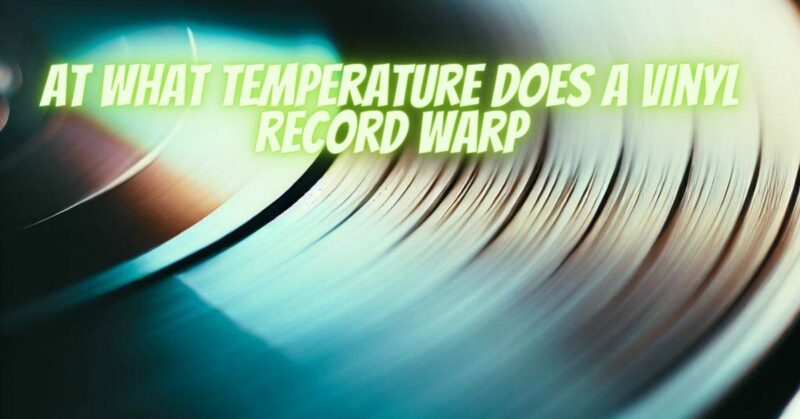Vinyl records hold a timeless allure, offering a tangible and immersive music experience. However, their vulnerability to various forms of damage, including warping, calls for careful preservation. Heat is a significant culprit behind record warping, a phenomenon that can distort the grooves and compromise sound quality. This article dives into the critical temperature threshold that can trigger vinyl record warping and provides insights into how you can safeguard your cherished collection from this risk.
Understanding Vinyl Record Warping
Warping Mechanism: Vinyl record warping occurs when the record is exposed to heat beyond its heat resistance threshold. The vinyl softens under heat, and if not distributed uniformly, it can cause the record to warp, either upwards (convex) or downwards (concave).
Impact on Sound Quality: Warped records can lead to skips, jumps, and distorted sound during playback. The uneven surface interferes with the stylus’s tracking, compromising the accuracy and fidelity of sound reproduction.
Temperature Threshold for Warping
Critical Temperature: The critical temperature threshold for vinyl record warping is typically around 140-160°F (60-70°C). Prolonged exposure to temperatures beyond this range can cause the vinyl to soften and lose its structural integrity, leading to warping.
Quick Changes vs. Gradual Exposure: While the critical temperature is an important factor, rapid temperature changes can also contribute to warping. A vinyl record exposed to a sudden increase in temperature, even if it’s below the critical threshold, can experience stress that leads to warping.
Preventive Measures
Storage Conditions: Maintain a storage environment that stays well below the critical temperature threshold. Keep your records away from sources of heat, direct sunlight, and any equipment that generates heat.
Proper Storage: Store your records upright on sturdy shelves or in crates, ensuring they are not exposed to pressure that could exacerbate warping.
Cooling Down Before Playback: If you suspect a record has been exposed to elevated temperatures, allow it to cool down to room temperature before playing. This minimizes the risk of stressing the grooves during playback.
Safe Playback Conditions: Ensure your turntable and vinyl collection are stored in a cool area, and avoid playing records that might have been exposed to heat without proper cooling.
Preserving the integrity of your vinyl record collection requires a keen understanding of the temperature threshold for warping. By respecting the critical range and taking preventive measures to keep your records cool and properly stored, you can ensure that your collection remains free from the distortion caused by warping. As you immerse yourself in the captivating world of vinyl, remember that the care you invest today will resonate through each play, allowing you to experience the true elegance of analog sound for years to come.


